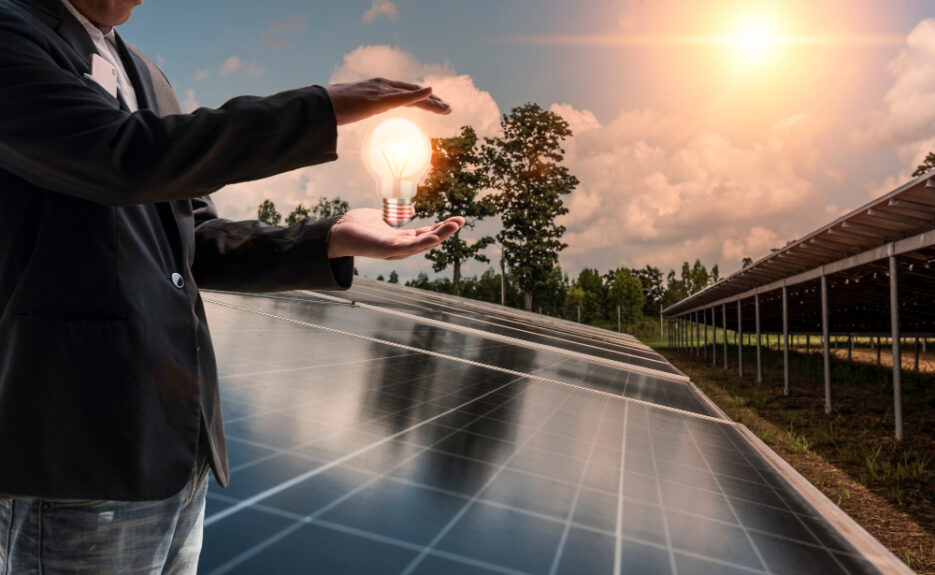
by Christian Riepe, SVP of Insights and Analytics
Electric utilities are increasingly turning to Distributed Energy Resources (DER) programs to enhance energy efficiency and meet growing demand. As the energy grid becomes more decentralized and the push for renewable energy intensifies, DER programs are proving to be essential tools for utilities looking to optimize their operations, reduce costs, and empower consumers. This blog post will explore the role of DERs, distinguish them from Virtual Power Plants (VPPs), and examine the benefits of DER programs through two standout case studies: the EV V2G program by Pacific Gas and Electric (PG&E) and the home battery program by Green Mountain Power.
What are Distributed Energy Resources (DER)?
Distributed Energy Resources (DER) refer to small-scale electricity generation or storage technologies that are located close to where energy is used, rather than centralized at large power plants. Examples of DERs include solar panels, wind turbines, battery storage systems, and electric vehicles (EVs) equipped with bidirectional charging capabilities. These resources are often connected to the grid but can also operate independently, providing a more flexible and resilient energy system.
DERs are distinct from Virtual Power Plants (VPPs), though the two concepts are sometimes confused. A VPP is a network of DERs that are aggregated and managed as a single entity using advanced software and communication technologies. While DERs are the individual components, a VPP acts as the orchestrator, optimizing the collective output of these distributed assets to meet grid demands, enhance reliability, and support grid stability.
The Benefits of DER Programs
DER programs offer numerous benefits for utilities, customers, and the environment. By integrating DERs into their operations, utilities can:
- Enhance Grid Resilience: DERs provide a decentralized approach to energy generation and storage, reducing the risk of large-scale outages and improving the grid's ability to recover from disruptions.
- Optimize Energy Efficiency: DERs can be deployed strategically to reduce peak demand, balance supply and demand, and minimize energy losses during transmission and distribution.
- Empower Consumers: DER programs give consumers more control over their energy usage and costs. Through incentives and rebates, utilities can encourage the adoption of DER technologies, helping customers to lower their energy bills and reduce their carbon footprint.
- Support Renewable Integration: DERs, particularly those powered by renewable energy sources like solar and wind, play a critical role in the transition to a cleaner energy grid. By incorporating these resources into their operations, utilities can reduce their reliance on fossil fuels and contribute to climate change mitigation efforts.
Case Study 1: PG&E’s EV V2G Program
Pacific Gas and Electric (PG&E) has been at the forefront of integrating electric vehicles (EVs) into their DER strategy. Their Vehicle-to-Grid (V2G) program is a pioneering initiative that leverages the bidirectional charging capabilities of EVs to support grid stability. Through this program, EV owners can discharge stored energy from their vehicles back into the grid during peak demand periods, effectively turning their cars into mobile energy storage units.
The V2G program not only helps PG&E manage peak demand but also provides financial incentives to participants. By participating in the program, EV owners can earn credits on their utility bills, making it a win-win for both the utility and the customer. Additionally, the program helps to reduce the strain on the grid, particularly during times of high energy consumption, and contributes to the overall efficiency and sustainability of the energy system.
Case Study 2: Green Mountain Power’s Home Battery Program
Green Mountain Power (GMP) in Vermont has implemented a highly successful home battery program as part of its DER strategy. This program offers customers the option to install battery storage systems in their homes, which can be charged during off-peak hours or by renewable energy sources like solar panels. These batteries can then be used to power homes during peak demand periods or during outages, providing both energy savings and increased resilience.
GMP's program stands out not only for its innovative approach but also for the tangible benefits it provides to customers. Participants in the program receive financial incentives, including rebates on the cost of the battery system and credits on their utility bills. The program also enhances grid stability by reducing peak demand and providing a reliable source of backup power. Furthermore, by promoting the adoption of battery storage, GMP is helping to accelerate the integration of renewable energy into the grid, supporting Vermont’s ambitious clean energy goals.
Conclusion
DER programs are emerging as a key component of modern utility strategies. By harnessing the power of distributed resources, utilities like PG&E and Green Mountain Power are not only improving energy efficiency and grid resilience but also empowering their customers and supporting the transition to a sustainable energy future. These programs demonstrate the potential of DERs to transform the way we generate, store, and consume energy, paving the way for a more resilient and efficient energy system.